|
Elegance and Power A Weekend Workshop with Raqia Hassan Gala Performance Show, April 21 and 22, 2007 Odd Fellows Hall, Redwood City, CA Review and Report by Rebecca Firestone Last weekend I went to a 2-day marathon with Raqia Hassan in an Oriental dance workshop sponsored by Hala Fauzi of Santa Clara. A native of Egypt herself, Hala brings many teachers over from Egypt and strives to promote the "Middle Eastern" part of Middle Eastern dance. Madame Hassan, as she was respectfully called, is one of the grande dames of Egyptian Oriental dance. I couldn't help but remember the words of Amina Goodyear and Gregory Burke about why they gave her a Giza Award in 2005.
It was these words that inspired me to register for the workshop - that, and the few minutes of footage that I'd seen of her on a video at Amina's house. Even on a small TV screen, I could see her sharp and powerful hip drops, very internal and yet explosive, like an earthquake. Earthquake is how I felt after the first hour. Raqia gets her powerful technique from her legs, specifically from the knees. If I said "snapping" or "popping" the knee that would give a wrong impression, because there was no hyperextension. Nonetheless, I felt the shock in my spine and it took awhile to adjust for that. Amazingly enough though, after two full days, I felt terrific! So whatever body mechanics she's using, they left me feeling better than before. Raqia in person was very unpretentious and down to earth. She seemed like a family matriarch: strong-willed, gracious, and fearless. Somewhat stout, with minimal makeup, she was clearly not image-obsessed like so many teachers are. Some of them wouldn't be caught dead at any event with anything less than full makeup, because what if someone got a bad photo of them? I really don't like feeling like I HAVE to wear makeup every time I take a class. It's a workshop, not a show, we're there to work and learn.
Anyway, there she stood before us in tight-fitting capri leggings and a T-shirt tucked in, not even a hip wrap. Her informal attire made it easier to see what she was doing than, say, those flaring bell-bottom pants where you can't see the instructor's feet. Even with heavily accented English, her explanations were clear and articulate as she alternated between demonstration and speaking. She taught two full choreographies, both very densely packed. They had the slightly off-rhythm, lilting, and surprising quality that also characterize Mahmoud Reda's workshops, but her movements were bigger, more committed, and perhaps less sanitized. Her Style and Technique
It was interesting that she taught many of the same movement sequences as Astryd de Michele, who actually learned them from Raqia, but it was over an hour into the class before it registered with me that I'd seen them before! I suppose that is one reason why it's good to see the same movements on several different body types and dancers. In addition to concentrating on the choreographies, I was also obsessed with seeing exactly HOW she danced generally. Her arms and hands were less studied than what I think of as the "modern" Egyptian style, and she wasn't on releve all the time. Doing the same movements flat-footed forced the upper body to work harder and gave the movements a more earthy, powerful feel. Seeing her dance gave me insights into things I'd seen other local dancers do. Many of them are intermediate or advanced students who are polishing their dance technique, and they'd have everything down except for maybe one or two things that just, to me, didn't look quite natural, like they were copying something they didn't quite understand yet. And here, I saw the exact same things in Raqia's dance, and they looked absolutely flawless. She made distinctions between Ghawazee dance and "elegant" Oriental dance, and easily switched from one to the other, showing arabesque variants from both styles. She also demonstrated folkloric and "elegant" versions of what my first teacher used to call the "Persian headache" - fingers touching the temple on one side of the face.
Relaxed, natural dance was what she emphasized over and over again. She used her legs to drive and power the movements rather than the abdominal or glute muscles [ed note:gluteus maximus is the largest of the muscle groups in the buttocks]. The glutes and abs were certainly involved, but the movement initiated from the legs, bracing off the floor, which was conveniently holding us up the entire time. She used almost straight legs for shimmies, vertical sideways hip figure 8s, hip drops and tucks. A huge variety of hip drops in every conceivable direction, no point trying to describe them all, you had to be there. She also emphasized several twists and sways which pivoted around the middle torso as opposed to the waist. Even in the midst of the most intricate isolations, however, she still looked casual, relaxed. It appeared to be pure coincidence that the rest of her body was not frozen in space, but was simply temporarily at rest. Emotional Interpretation
And here we were, dancing to a song that boiled down to just this scenario, except this time WE were dancing the part of the jilted party. Many of the gestures and movements were deeply expressive of the singer's frustration and bewilderment. "If you're going to end it with me, just end it already... the pain will be easier... forget what we had... it's all over..." Moreover, the body language and gestures were what an Egyptian would use during a lover's quarrel, not, say, what a San Francisco urban hipster would do. There was a defiant, sulky, reproachful feeling to it, perhaps an attempt to guilt-trip or manipulate the imagined lover, and a dismissal of anything the other person might possibly have to say - all of this clearly shown in Raqia's stance, expression, and attitude. I kept trying to tap into my last bad relationship so I could "throw" him out again! The emphasis on emotion is a hallmark of solo Egyptian Oriental dance, and is a stark contrast to the increasing emphasis on ever more complex layering and drilling as the pinnacle of bellydance achievement.
Hala notes that the Oriental dance is also different from Reda-style folkloric dance, which typically has no story line and is more theatrical, with a greater gap between audience and performer. Class FormatSometimes Raqia demonstrated on a slightly raised podium at one end of the hall. The Odd Fellows are a philanthropic, quasi-Masonic order. Their hall had these elevated areas on each wall - nice to stand up and see across the room from time to time. The only thing it didn't have was mirrors, and in the end I didn't miss them because I spent more time watching Madame Hassan. At other times she would teach in the round and we would circle around her. Some people liked this; others found it hard to transpose left to right when she was facing them. I personally liked seeing her expression and just lived with being on the "wrong" foot some of the time. It was the essence I was after, not the choreography. The level of the class was pretty good. There were a lot of serious dancers, who paid full attention and asked about the right amount of questions. We did NOT spend too much time standing around talking.
The showcased stars of the evening were Tamra-Henna and Mohamed Shahin, both of whom traveled into town just for this show, with additional performances by local dancers that I knew: Hala, Ahava, Marcela, and Debbie Lammam/Smith. Additional performances were by Catarina, Karawan, and a lovely dancer from Los Angeles named Meera. According to the bios in the program, most of the dancers had either studied with Raqia herself, or were proteges of other Egyptian teachers from the Mahmoud Reda school. (Raqia Hassan originally was dancer and choreographer with the Reda Troupe.) I felt that technique predominated in the show, which was both good and maybe not so good. Many of the locals are people that I always try to catch whenever they perform, because they are so d***ed good. And no one could really top Tamra-Henna for exquisiteness of technique. She came on twice; her first number was a very exquisite cane dance, all the more enjoyable as a contrast coming immediately after Mohamed Shahin's masculine double cane. I believe that the double cane was directly from the Reda Troupe's choreographies, and very similar to Atef Farag's double cane dance - even down to the costume - as performed on last year's performance DVD which I purchased that weekend. Mohamed Shahin also performed a Tannoura dance, which is the colorful "whirling dervish" dance adapted for performance. In that dance, he spun around almost nonstop for what seemed like forever, without missing a beat, while handling 4 frame drums in constantly changing formations (as a visual accent - he didn't play them).
The cane dance was originally from the tahtiyb, which is a martial art, albeit, already a ritualized and stylized one, and the Tannoura was originally a spiritual movement done by a particular order of Sufis. I watched him closely, and saw no awareness on his part of that these movements were anything other than dance choreographies. I wished that he had at least pretended to be doing "real" tahtiyb, or pretended to be a Sufi seeking God, while he was performing these dances. On one of Aisha Ali's compilations, "Dances of Egypt", there's about a one-minute sequence of some nameless guy on the docks of Alexandria doing a cane dance that really rocked... and another of tahtiyb using longer rattan sticks. In both of those, the men used a lot of deep knee bends - maybe to strut and show off their strength - and included both strikes and blocks, with very smooth and flexible shoulder and arm movements. These qualities are too often missing from cane dances adapted for stage, particularly when performed by people who haven't seen much tahtiyb in its natural setting. Who knows - perhaps the Egyptians themselves don't even do it for fun anymore, having forsaken these rustic arts for more sophisticated urban pursuits.
Even the folkloric sections were almost too polished. And, as I said earlier, with the exception of the Hala Dance Troupe, the evening consisted entirely of soloists, each of whom came out, danced, and then exited. Leyla Lanty, another local dancer, emceed with graciousness and poise. The person who really captured my very fullest attention was Meera, and she was the only one who didn't do Egyptian dance! She presented a Bollywood fusion/folk dance that portrayed a young girl on the threshold of marriage, out in the meadow by herself for what might be the last time as a maiden. Somehow, Meera managed to convey the chaotic and mixed emotions that such a person might be feeling - excitement, anticipation, but also sadness, with occasional unguarded moments of real fear. Meera has had a lot of classical Indian dance training, and she showed superb control of her face and body, switching between the varied emotional states in the blink of an eye. So I guess even she had the "exquisite folkloric syndrome" but yet, with her, I didn't mind, probably because I really believed in those few dark moments that she put into her dance.
Raqia's Background She was, in fact, a very gifted choreographer, working by seeing how the movements looked on other people. Hala says, "She became known as a great teacher because her choreographies were so fascinating. All the top dancers in Egypt started training with her."
Conclusion My only nitpick was the sound. It was earsplitting, both during the workshop and the show, and the genteel cries from shocked ladies to turn it down were no doubt drowned out by the din. There were some technical difficulties during the class, which Raqia worked around without much trouble, and the class announcements were also over-miked. I guess it's a choice between shouting over the crowd or getting on a microphone. But I can't end the review on a negative note! That would be so... harsh... aha! I'll leave this space for quotes. Hala: "I can't contain what I feel for Raqia in mere words; I have such utter respect for what she has done. When she started putting on her annual Ahlan wa Sahlan festival, she told me she had very good reason to fear for her life. Now it's a major tourism generator, enjoying respect from Egyptian officials, with lots of media attention. Initially, she had to keep all mention of it OUT of the media. She single-handedly turned the tide [for Egyptian Oriental dance] from something that had to be hidden into a national treasure." Ma*Shuqa: "You know that the instruction is a success when the dancers taking class look beautiful each in their own way as they learn and internalize the instruction... Although some students may have found it difficult to take instruction "in the round" with Raqia in the center of the room, this instructional format provides four learning aspects not found in the traditional dance instruction in lines. Instruction in the round provides: 1) the opportunity and option to "mirror" the instructor and learn the choreography with the opposite footing and body presentation, 2) learn feeling and attitude by watching Raqia's facial expressions , 3) learn to perform the choreography with a holistic presentation in the round, and consequently 4) to develop more individualized performance of her choreography." Andrea Donderi: "quivering with intention. direct gaze, fierce and intensely friendly. every muscle communicating directly… elastic body… tight bright leggings easy to see… whole body obviously used to making things clear." Shabnam Pena: "She did some breakdown of movements, but toward the end it was more the 'follow the bouncing butt' old school style. Drove me crazy when she kept doing directional changes but I really enjoyed watching her perform the choreography. Her speech about being your own dancer was priceless. She said 'Take the steps you learn from me and make them your own." Leyla Lanty: "Her English is fluent and she uses simple direct words like 'down', 'out', 'in', 'opposite', 'right', 'left' while demonstrating. Once you learn what she means by each word, the rest is easy... In private lessons, she is a lot more demanding than in a group class, but, as in the group classes, she is supportive of your desire to learn... She never puts you down for making mistakes or having a hard time learning a certain movement. A typical comment from my private lessons, which I remember to this day 'Leyla, you are a teacher so you must learn to do this right so you can teach your students!'" Amina Goodyear: "Although Raqia Hassan began each workshop class with invaluable technique and combination drills and continued on to teach unique and intricate choreographies, her main contribution to the workshop dancer was inspiration. Her power and passion emerging from her soft yet strong and precise dance style is clearly emotional and melodic based on a grounded percussive base. If the workshop dancer 'listens' to the energy of Raqia's persona and psyche, the dancer will find permission to truly dance. Through Raqia Hassan's demonstrations of her choreography the dancer learns to internalize the dance and transform the kinesthetic exercises into a marriage of dancer, music and audience. This is a priceless lesson."
Ready
for more? 3-27-07
Macedonian Bellydance
CD Reviewed by: Rebecca Firestone 3-18-07
Circle Dance by
Melina of Daughters of Rhea 10-4-05
Raqia's Response by Dee
Dee Asad 10-19-01
Follow the Bouncing
Butt; in Defense of a Teaching Method 12-30-06
I Dance; You Follow by Leila 5-18-07
A Report on the First International
Bellydance Conference of Canada Part One- Lectures, Workshops,
Panel Discussions by Diane Adams Photos by Lynette |


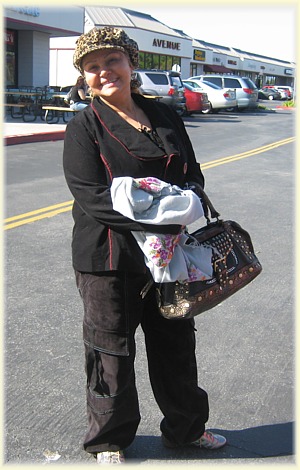
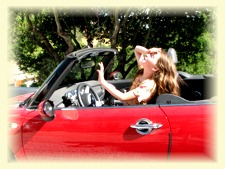
 Gala
Show
Gala
Show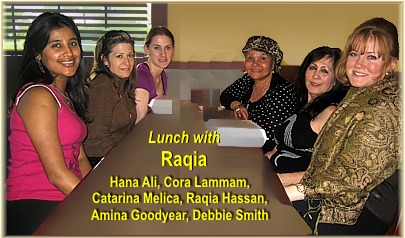 Maybe
my impression was due to some self-consciousness on the dancers'
parts, performing in front of Raqia (who doesn't perform).
Maybe
my impression was due to some self-consciousness on the dancers'
parts, performing in front of Raqia (who doesn't perform). 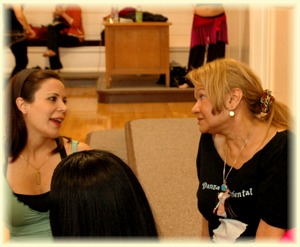
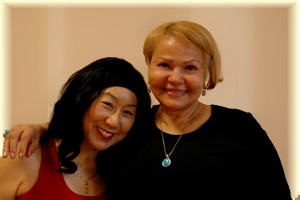
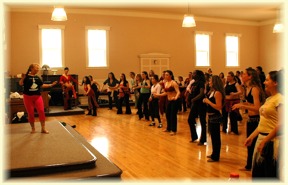
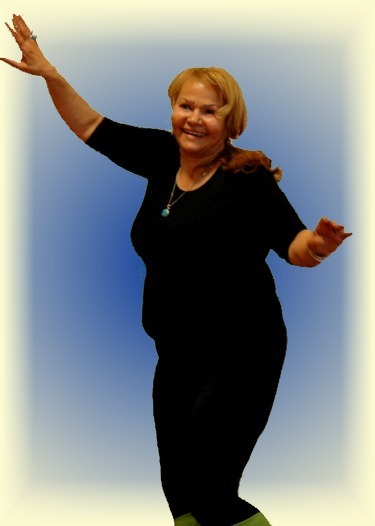 Have
a comment?
Have
a comment? 

